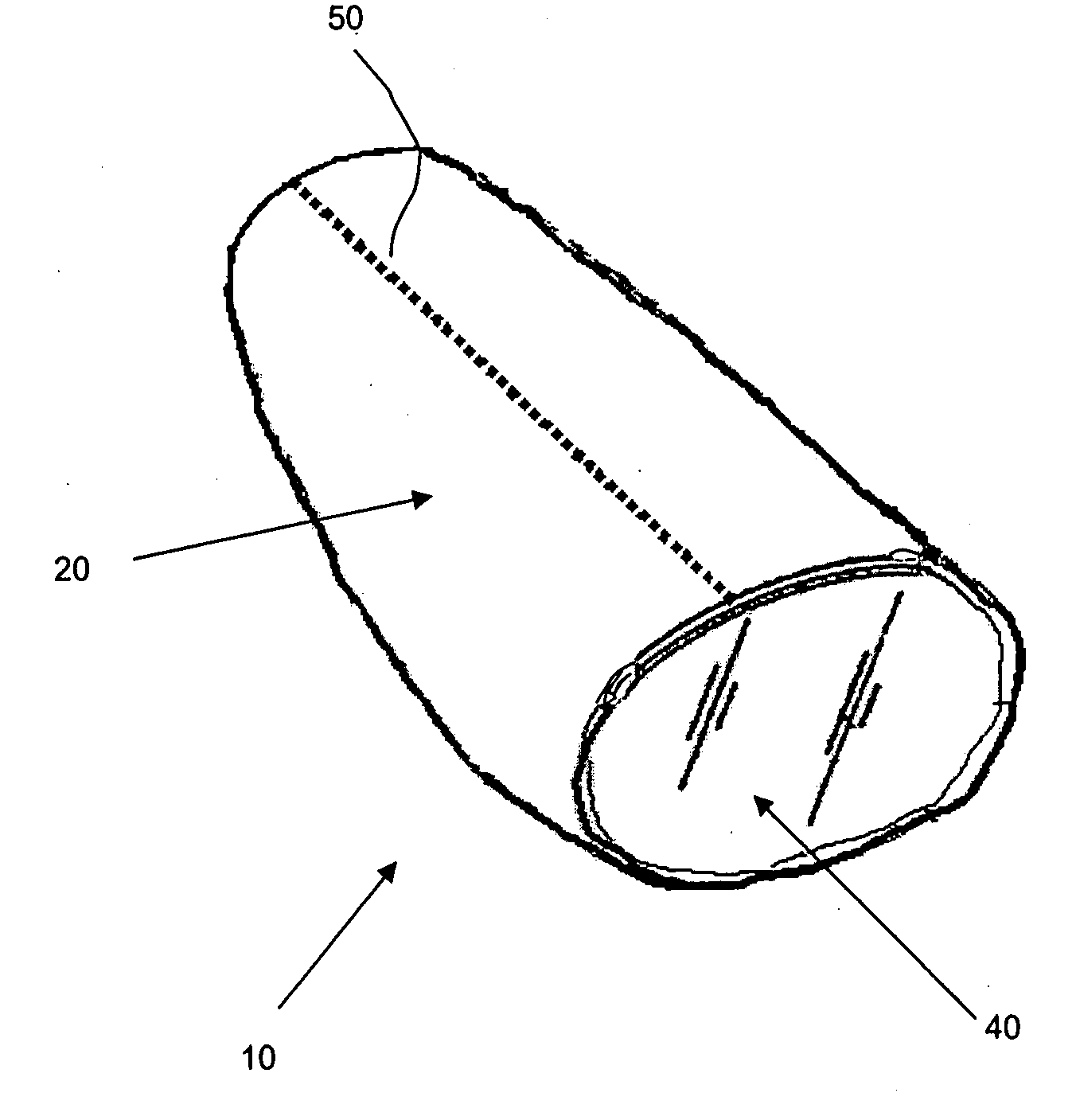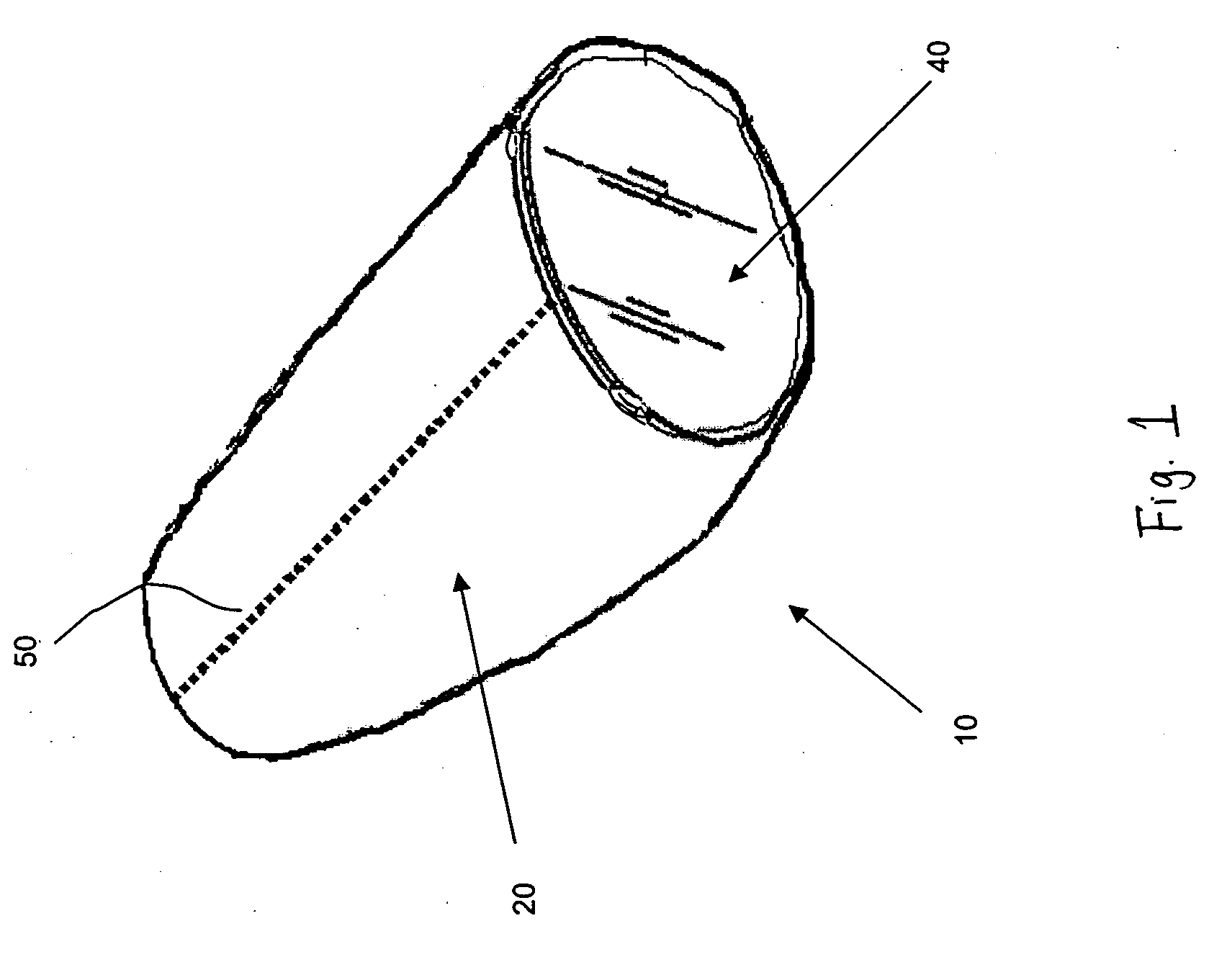Finger glove with single seam
a single seam, glove technology, applied in the direction of brushes, protective garments, domestic applications, etc., can solve the problems of uneconomical competitiveness of product(s) manufacturing, increased production costs, and undesirable stiffness, so as to avoid irritation to the mouth and simple manufacturing
- Summary
- Abstract
- Description
- Claims
- Application Information
AI Technical Summary
Benefits of technology
Problems solved by technology
Method used
Image
Examples
example 1
[0088] A finger glove of the present invention was formed as follows.
[0089] Specifically, a point unbonded spunbond laminate material was ultrasonically welded to form a tube and then sealed in one end using a Branson 920 IW ultrasonic welder.
[0090] The point unbonded spunbond laminate was formed by thermally bonding together a polypropylene spunbond web, a breathable film sheet, and a bicomponent spunbond web. The breathable film sheet was placed in between the spunbond webs.
[0091] The polypropylene spunbond web had a basis weight of 17 gsm. The bicomponent spunbond web was made from bicomponent filaments having a polyethylene component and a polypropylene component in a side-by-side relationship. The bicomponent spunbond web had a basis weight of 85 gsm. The breathable film sheet was made from a linear low density polyethylene containing a calcium carbonate filler. The film was stretched in order to create a microporous film. The film had a basis weight of 17 gsm.
[0092] The bi...
example 2
[0094] A finger glove of the present invention was formed as follows.
[0095] Specifically, a glove is made from a stretch-bonded laminate (SBL) sheet using a Branson 920 IW ultrasonic welder.
[0096] The SBL sheet, included threads of an elastic material sandwiched between two polypropylene spunbond layers. The elastic material used was KRATON G2740 S-EB-S block copolymer available from the Shell Oil Company. The SBL sheet had a basis weight of 85 gsm. An imprinted, magnesium bond plate served as an anvil for ultrasonic bonding of the SBL sheet to the point unbonded spunbond laminate.
[0097] The ultrasonic welding process will cut the finger glove cut directly and be collected. Because of the flush seam, there is no need to invert glove to have the seam lines inside. Peppermint oil was applied to the finger glove, which was subsequently used to clean the mouth of an adult.
example 3
[0098] A finger glove as described in Example 1 or 2 was constructed and treated with peppermint oil. The finger glove was then subsequently used by an adult to clean the mouth of a toddler.
PUM
 Login to View More
Login to View More Abstract
Description
Claims
Application Information
 Login to View More
Login to View More - Generate Ideas
- Intellectual Property
- Life Sciences
- Materials
- Tech Scout
- Unparalleled Data Quality
- Higher Quality Content
- 60% Fewer Hallucinations
Browse by: Latest US Patents, China's latest patents, Technical Efficacy Thesaurus, Application Domain, Technology Topic, Popular Technical Reports.
© 2025 PatSnap. All rights reserved.Legal|Privacy policy|Modern Slavery Act Transparency Statement|Sitemap|About US| Contact US: help@patsnap.com


